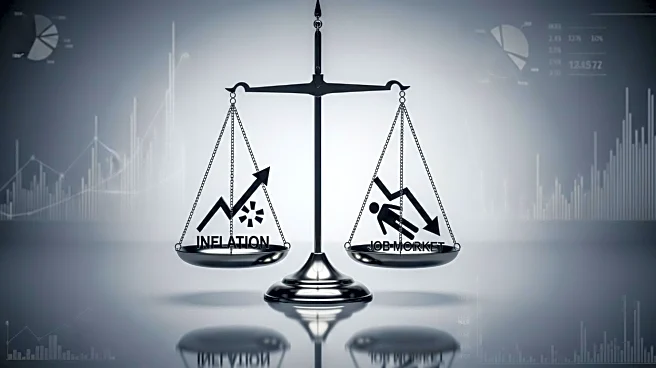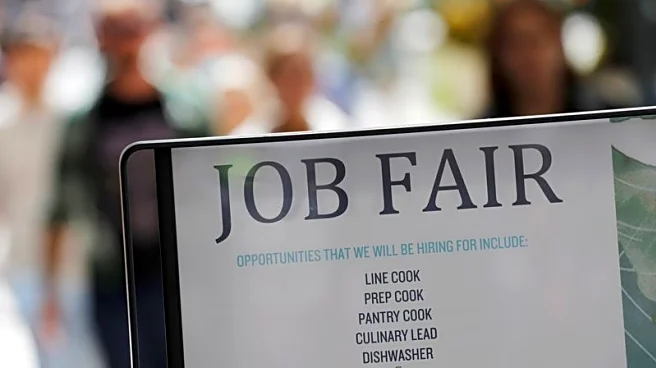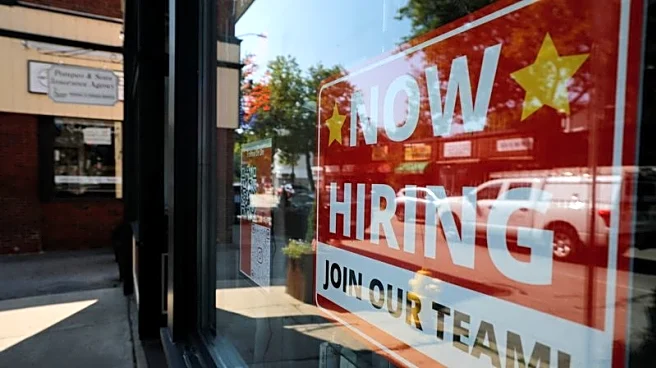What's Happening?
The U.S. labor market showed signs of softening in August, with job openings increasing slightly while hiring declined. According to the Labor Department's Job Openings and Labor Turnover Survey (JOLTS), job openings rose by 19,000 to 7.227 million, while hiring decreased by 114,000 to 5.126 million. The report indicates a sluggish labor market, with households growing pessimistic about job availability. The Conference Board survey revealed a drop in the share of consumers viewing jobs as 'plentiful,' reaching the lowest level since early 2021. The labor market's easing is attributed to factors such as tariffs, artificial intelligence, and immigration policies.
Why It's Important?
The softening labor market has significant implications for economic policy and the Federal Reserve's decisions. The decline in hiring and consumer pessimism may prompt the Fed to consider further interest rate cuts to stimulate economic activity. The labor market's condition also affects consumer spending and overall economic growth, with potential repercussions for businesses and workers. The report highlights challenges in maintaining a robust labor market amid external pressures, such as trade policies and technological advancements, which could impact job creation and economic stability.
What's Next?
With the government facing a potential shutdown, the release of key economic data, including September's employment report, may be suspended. This uncertainty could affect the Fed's ability to make informed decisions regarding interest rates and economic policy. Economists expect the Fed to focus more on labor market conditions, with nonfarm payrolls projected to increase modestly in September. The unemployment rate is forecast to remain unchanged, but risks are tilted to the upside, indicating potential challenges in achieving full employment.
Beyond the Headlines
The labor market's softening raises questions about the long-term impact of technological advancements and immigration policies on job availability. The rise of artificial intelligence and automation may lead to structural changes in the labor market, affecting job types and skill requirements. Additionally, immigration policies could influence labor supply and demand, shaping the future workforce. These factors highlight the need for adaptive economic policies to address evolving labor market dynamics and ensure sustainable growth.











